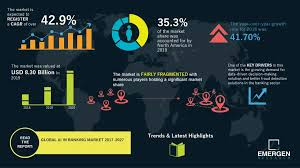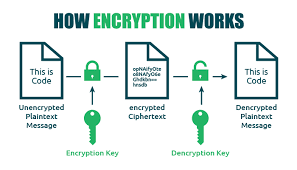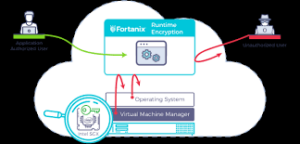Based on FICO’s latest consumer fraud research in Singapore, there are several notable insights about fraud concerns and financial security priorities among Singaporean consumers:
Top Consumer Concerns
- 26% of Singaporeans worry about real-time payment scams, where they could be tricked into sending money to criminals
- 25% cite identity theft as their primary financial crime concern
Perception vs. Reality Gap
- 36% believe they’re unlikely to become identity theft victims
- Only 15% consider identity theft a real possibility for themselves
- 17% are confident their identity hasn’t been compromised
- Only 6% reported having their stolen identity used to open financial accounts (lower than India at 13% and Thailand at 12%)
Financial Service Provider Selection Criteria
- Strong fraud protection is the top priority for 34% of consumers
- Ease of use ranks second at 23%
- Other factors, such as customer service, AML policies, environmental practices, ethical data use, fair treatment, and value for money, are considered less critical.
According to Chee Keong Leo, FICO’s lead for fraud, security, and financial crime in Asia Pacific, fraud protection has evolved from being viewed as just a cost center to becoming a selling point for banks, reflecting consumers’ growing awareness of online theft threats.
The survey was conducted in November 2023 with 1,000 Singaporean adults as part of a more extensive study involving approximately 12,000 consumers from 13 countries.
Analysis of Fraud, Security, and Fintech Crime in Asia with a Focus on Singapore
Current Landscape of Financial Fraud in Asia
Asia has seen significant growth in digital financial fraud in recent years, driven by several factors:
- Rapid digital adoption: The accelerated shift to digital financial services has created new attack vectors for fraudsters.
- Real-time payment vulnerabilities: The expansion of instant payment systems across Asia (like PayNow in Singapore, UPI in India) has introduced transaction speed that outpaces fraud detection capabilities.
- Regional variations: Fraud patterns differ significantly across Asian markets:
- Singapore and Hong Kong face sophisticated scams targeting their affluent populations
- Emerging markets like Indonesia and the Philippines experience higher rates of account takeover fraud
- India deals with a large volume of UPI-related scams
Singapore’s Fraud Landscape
Singapore specifically faces:
- Phishing dominance: Social engineering attacks remain the primary vector, with scammers impersonating authorities (government agencies, banks, delivery services).
- Investment scams: Fraudulent investment opportunities promising high returns target Singapore’s financially savvy population.
- Banking malware: Sophisticated trojans targeting mobile banking applications.
- Job scams: Fake employment opportunities leading to money laundering schemes.
- Identity theft concerns: The FICO study showed that 25% of Singaporeans consider this their top financial crime concern.
Anti-Scam Resources in Singapore
Singapore has developed a robust anti-scam infrastructure:
Government Resources
- ScamShield App: Government-developed application that blocks scam calls and messages
- Anti-Scam Centre (ASC): Established by the Singapore Police Force to coordinate scam response
- National Crime Prevention Council’s Scam Alert website: Provides updates on the latest scams.
Banking Sector Protections
- Transaction delays: Many banks have implemented cooling periods for large transfers
- Scam education resources: DBS, OCBC, UOB and other banks provide educational materials
- AI-based detection systems: Real-time monitoring of unusual transaction patterns
Public-Private Partnerships
- Project FRONTIER: Collaboration between banks and authorities to share scam intelligence
- SG Cyber Safe Programme: Educates businesses on cybersecurity best practices
Practical Steps for Singapore Residents
If you’re concerned about scams in Singapore:
- Register for ScamShield (iOS) or set call filters (Android)
- Enable bank security features:
- Transaction limits
- Two-factor authentication
- Biometric verification
- Report suspicious activity:
- Police Hotline: 1800-255-0000
- Anti-Scam Helpline: 1800-722-6688
- Online at www.police.gov.sg/iwitness
- Verify requests through official channels before transferring money or providing personal information
- Stay informed about the latest scam techniques through:
- Singapore Police Force’s social media channels
- ScamAlert.sg website
- Bank security notifications
Emerging Trends and Future Concerns
- AI-powered scams: Increasingly sophisticated voice cloning and deepfake technologies
- Cross-border fraud challenges: Singapore’s position as a financial hub makes it vulnerable to international fraud operations
- Digital currency risks: As cryptocurrency and CBDC adoption increases, related scams are evolving
- Supply chain vulnerabilities: Third-party vendor compromises affecting financial institutions
The financial fraud landscape in Asia continues to evolve rapidly, requiring constant vigilance, education, and technological countermeasures to protect consumers and financial systems.
Fintech Fraud and the Anti-Scam Ecosystem in Singapore
Current Fintech Fraud Landscape in Singapore
Singapore’s advanced digital infrastructure and high financial technology adoption rate have unfortunately created fertile ground for sophisticated fraud schemes:
Prevalent Fintech Fraud Types
- Digital Banking Scams
- Account takeover fraud through credential theft
- Mobile banking malware that intercepts authentication codes
- Phishing attacks mimicking legitimate banking interfaces
- Payment System Vulnerabilities
- PayNow and PayLah! scams involving fraudulent transaction requests
- QR code manipulation at payment terminals
- Peer-to-peer transfer scams exploiting the irreversibility of transactions
- Investment-Related Fraud
- Fraudulent crypto investment platforms promising unrealistic returns
- Clone apps mimicking legitimate brokerages and trading platforms
- Unauthorized transactions through compromised investment accounts
- Money Mule Operations
- Recruitment through seemingly legitimate job offers
- Use of compromised accounts for money laundering activities
- International money mule networks with Singapore as a transit point
- Data Breaches
- Targeted attacks on fintech providers to extract customer financial data
- Third-party vendor compromises affecting multiple financial institutions
- Sale of compromised Singapore financial credentials on dark web marketplaces
Singapore’s Anti-Scam Infrastructure
Singapore has developed one of Asia’s most comprehensive anti-scam ecosystems:
Regulatory Framework
- Monetary Authority of Singapore (MAS)
- Implementation of stringent digital banking security requirements
- Regular security assessments of financial institutions
- Regulatory sandbox for testing new anti-fraud technologies
- Singapore Police Force
- Dedicated Anti-Scam Centre established in 2019
- Rapid intervention protocols to freeze compromised accounts
- Cross-border cooperation with international law enforcement
- Infocomm Media Development Authority (IMDA)
- SMS Sender ID Registry to reduce SMS spoofing
- Blocking of known scam phone numbers and websites
- Public awareness campaigns on digital literacy
Financial Institution Responses
- Enhanced Authentication Measures
- Multi-factor authentication requirements
- Device binding technology
- Behavioral biometrics and anomaly detection
- Transaction monitoring using AI and machine learning
- Customer Protection Initiatives
- Mandatory cooling periods for large transactions
- Lower default transaction limits
- Verification requirements for new payee additions
- In-app security notifications and controls
- Industry Collaboration
- Singapore Quick Response Code (SGQR) security standards
- Association of Banks in Singapore (ABS) fraud intelligence sharing
- SWIFT Customer Security Program implementation
Technology Solutions
- ScamShield Application
- Government-developed application blocking scam calls/SMS
- Continually updated scam database
- User reporting capabilities to improve detection
- AI-Powered Fraud Detection
- Real-time transaction monitoring systems
- Predictive analytics to identify high-risk transactions
- Network analysis to detect organized fraud rings
- Digital Identity Verification
- Singapore’s National Digital Identity (NDI) system
- Singpass authentication for financial transactions
- Biometric verification requirements
Best Practices for Consumers
Immediate Protection Steps
- Secure your devices:
- Enable biometric authentication
- Keep all financial apps updated
- Use separate, strong passwords for financial accounts
- Enable notifications for all transactions
- Verify before acting:
- Always check account numbers before confirming transfers
- Verify payment requests through separate channels
- Never click on links in financial SMS messages
- Use official bank websites by typing the URL directly
- Report suspicious activity promptly:
- Anti-Scam Helpline: 1800-722-6688
- Police Hotline: 1800-255-0000
- Your bank’s fraud hotline (usually available 24/7)
- Report to ScamShield app
Educational Resources
- National Crime Prevention Council
- ScamAlert.sg website with latest scam warnings
- Community engagement programs
- Educational materials in multiple languages
- Bank-Specific Resources
- DBS ScamAware education program
- OCBC Bank’s Anti-Fraud Hub
- UOB Mighty Secure guidelines
- Standard Chartered’s Security Centre
- MoneySense Financial Education
- Government-led program for financial literacy
- Scam prevention workshops
- Online education modules
Emerging Challenges and Future Directions
- Cross-Border Coordination
- The transnational nature of fintech fraud requires improved international cooperation.
- Need for harmonized regulatory frameworks across ASEAN
- Challenges in recovering funds transferred overseas
- Technology Evolution
- Deepfake technology enabling voice and video impersonation
- AI-generated phishing content becoming more convincing
- New payment technologies introducing novel risk vectors
- Future Initiatives
- Development of industry-wide transaction monitoring systems
- Enhanced customer education at the point of transaction
- Potential mandatory security features for all financial applications
- Exploration of blockchain for secure transaction verification
Singapore’s approach to combating fintech fraud represents one of the most comprehensive models in Asia, combining regulation, technology, industry collaboration, and public education. However, as financial technologies continue to evolve, so too must the protective measures designed to secure them.
Fraud Assistance Resources in Singapore
Singapore has developed a comprehensive ecosystem of support services to assist fraud victims and prevent future incidents. Here’s an overview of the key fraud assistance resources available:
Government Resources
1. Singapore Police Force (SPF) Anti-Scam Centre
- Established in 2019 as a specialized unit to tackle scams
- Focuses on quick intervention to freeze suspicious bank accounts and recover stolen funds
- Works directly with major banks to expedite the freezing of accounts
- Contact: Call 1800-255-0000 or report online via the Police e-Service website
2. National Crime Prevention Council (NCPC)
- Operates the Scam Alert website (scamalert.sg)
- Provides up-to-date information on the latest scam trends
- Offers prevention tips and educational resources
- Runs the “Spot the Signs. Stop the Crimes” public education campaign
3. Monetary Authority of Singapore (MAS)
- Coordinates industry-wide response to financial fraud
- Enforces regulations requiring banks to implement fraud prevention measures
- Provides financial consumer education through MoneySense initiatives
- Has established accountability frameworks for banks handling scam cases

Technological Tools
1. ScamShield App
- Free app developed by the National Crime Prevention Council
- Filters and blocks known scam calls and messages
- Allows users to report scam messages
- Available for iOS and Android devices
2. Bank Security Features
- Central Singaporean banks offer:
- In-app scam alert notifications
- Transaction monitoring systems that flag suspicious activities
- Temporary card freezing options
- Two-factor authentication for sensitive transactions

Assistance for Fraud Victims
1. Immediate Response Protocol
When Singaporeans become victims of fraud, they should:
- File a police report immediately
- Contact their bank to freeze accounts and attempt fund recovery
- Preserve all evidence of the fraud (messages, emails, transaction details)
- Report to relevant platforms where the fraud occurred
2. Financial Assistance
- Case-by-case financial assistance may be available through:
- Social service agencies
- Community development councils
- Financial institutions’ goodwill policies
3. Mental Health Support
- Fraud victims often experience significant emotional distress
- Support available through:
- Silver Ribbon Singapore
- Singapore Association for Mental Health
- Institute of Mental Health’s helpline
Educational Initiatives
1. Digital Defense Campaign
- National initiative to improve digital literacy and fraud awareness
- Targets vulnerable populations, including seniors and young adults
- Provides workshops and educational materials

2. Inter-Ministry Committee on Scams
- Coordinates whole-of-government approach to scam prevention
- Develops educational content for different demographic groups
- Implement awareness campaigns across multiple channels

Industry Collaboration
1. Association of Banks in Singapore (ABS)
- Coordinates industry-wide anti-fraud measures
- Facilitates information sharing between financial institutions
- Implements standardized fraud response protocols
2. Singapore FinTech Association
- Promotes fintech solutions for fraud prevention
- Coordinates security standards among fintech companies
- Offers educational resources for the fintech community
Singapore’s approach to fraud assistance emphasizes prevention, rapid response, and cross-sector collaboration. The integration of government agencies, financial institutions, and technology platforms creates a robust support system for addressing the growing challenge of financial fraud in the digital age.
Strategic Importance

Fintech partnerships are increasingly becoming a necessity rather than just an option for banks. With 63% of financial institutions now investing in AI (compared to only 32% in 2023), banks risk falling behind competitors if they don’t innovate. These partnerships allow traditional banks to meet evolving customer expectations for seamless, tech-driven banking experiences.
Complementary Strengths
Banks and FinTechs bring different strengths to partnerships:
- Banks excel at capital deployment and risk management within regulatory frameworks
- Fintechs offer technological agility, rapid development cycles, and innovative approaches to data analysis

Key Benefits of Partnerships
- Enhanced Customer Experience: Creating the seamless digital experiences that modern business clients expect
- AI-powered solutions: Enabling data-backed automation and instant risk decisioning
- Global Expansion Support: Facilitating cross-border payment solutions and navigating complex international tax environments
- Specialized Expertise: Bringing in targeted technological capabilities that would be difficult for banks to develop internally

Implementation Challenges
The article acknowledges several obstacles to successful partnerships:
- Risk aversion in banking culture
- Technical compatibility with legacy systems
- Cultural resistance to technological change

Recommended Implementation Approach
The article advocates for a “crawl-walk-run” strategy that includes:
- Robust security frameworks to combat fraud
- Composable technology architectures with flexible APIs
- Cultural transformation and commitment to digital innovation

Long-Term Vision
The most successful financial institutions will build ecosystems that combine:
- The regulatory expertise and capital strength of traditional banking
- The technological agility and customer focus of FinTechs
This balanced approach recognizes that AI should enhance human judgment rather than replace it, much like self-driving cars still require human oversight.

Fintech Partnerships for Banking in Singapore’s AI Landscape
Singapore’s Unique Banking Environment
Singapore presents a particularly fertile ground for bank-fintech partnerships in the AI era due to several factors:
- Advanced Digital Infrastructure: Singapore’s world-class digital infrastructure provides an excellent foundation for AI-powered banking innovations.
- Supportive Regulatory Framework: The Monetary Authority of Singapore (MAS) has established progressive regulatory sandboxes and frameworks that encourage fintech innovation while maintaining financial stability.
- Tech-Savvy Population: Singapore has one of the highest digital adoption rates globally, with consumers expecting sophisticated digital banking experiences.
- Regional Financial Hub Status: As ASEAN’s financial center, Singapore-based banks need cutting-edge solutions to maintain a competitive advantage.

Strategic Opportunities for Singapore Banks
Cross-Border Commerce Solutions
Singapore’s position as a gateway to ASEAN markets makes fintech partnerships that facilitate cross-border payments and trade finance particularly valuable. AI-powered solutions can help navigate the complex regulatory environments across multiple jurisdictions.
Wealth Management Innovation
With Singapore’s growing importance as a wealth management hub, partnerships that enhance personalized wealth services through AI could create significant competitive advantages.
SME Banking Transformation
Fintech partnerships can help Singapore banks better serve the SME segment through:
- Streamlined credit assessment using alternative data
- Automated compliance for cross-border operations
- AI-powered cash flow management tools
Sustainable Finance Solutions
Singapore’s push toward green finance creates opportunities for partnerships that leverage AI to assess ESG compliance and sustainable investment opportunities.

Implementation Considerations for Singapore Context
- Data Protection Compliance: Partnerships must navigate Singapore’s Personal Data Protection Act and banking secrecy provisions.
- Cultural Integration: Singapore’s multicultural business environment requires careful attention to cultural factors when implementing new technologies.
- Talent Development: Building local AI expertise through partnerships with Singapore’s universities and research institutions.
- Gradual Deployment Strategy: The “crawl-walk-run” approach would work well in Singapore’s pragmatic business culture.
By strategically leveraging fintech partnerships, Singapore banks can maintain their competitive edge in the region while meeting the increasingly sophisticated expectations of their business clients in the AI era.

Analysis of Fintech Partnerships in Singapore
Singapore’s Fintech Partnership Landscape
Singapore has established itself as a leading fintech hub in Asia, with a robust ecosystem that facilitates strategic partnerships between traditional financial institutions and technology innovators. This ecosystem is characterized by:
Regulatory Support
- The Monetary Authority of Singapore (MAS) actively fosters innovation through initiatives like the Fintech Regulatory Sandbox.
- The Financial Sector Technology and Innovation (FSTI) scheme provides funding support for innovation projects.
- Singapore’s progressive licensing frameworks (like the Payment Services Act) create clarity for partnerships.

Partnership Models
- Investment and Acquisition: Banks like DBS, OCBC, and UOB have established venture arms to invest in promising fintechs
- API-Based Collaboration: Open banking initiatives enable third-party developers to build applications around financial institutions
- Co-creation Labs: Collaborative spaces where banks and FinTechs develop solutions together
- Accelerator Programs: Bank-sponsored programs that nurture early-stage fintech startups
Key Partnership Areas
- Payments and Remittance: Partnerships enabling real-time cross-border payments
- Wealth Management: AI-powered advisory services and robo-advisors
- SME Banking: Alternative credit scoring and automated lending platforms
- Compliance and Regtech: AI for regulatory reporting and fraud detection
- Blockchain Applications: Distributed ledger solutions for trade finance and securities settlement

Success Factors for Singapore Partnerships
Singapore-Specific Advantages
- Strategic location as gateway to ASEAN markets
- Strong government support for digitalization
- High digital adoption rates among consumers and businesses
- Deep talent pool in both finance and technology
- English as a working language, facilitating international partnerships

Challenges to Address
- Compliance with data localization requirements across different ASEAN markets
- Integration with legacy banking systems
- Aligning business models between traditional banks and tech-focused startups
- Talent retention in a competitive market
Notable Examples
Several successful partnerships demonstrate different models:
- DBS Bank and Partior: Collaboration on blockchain-based clearing and settlement infrastructure
- OCBC and Rapyd: Partnership for unified payment and collection capabilities across multiple countries
- Standard Chartered and Sygnum: Joint venture for digital asset custody services
- UOB and Grab: Strategic alliance for digital financial services across ASEAN

Future Trajectory
Singapore’s fintech partnerships are likely to evolve toward:
- More emphasis on AI-powered personalization and risk assessment
- Increased focus on sustainable finance and ESG integration
- Expansion of embedded finance models into non-financial sectors
- Greater cross-border collaboration throughout the ASEAN region
As financial services become increasingly borderless and technology-driven, Singapore’s unique combination of regulatory support, technological infrastructure, and strategic location positions it as an ideal laboratory for developing next-generation bank-fintech partnerships that could serve as models for the broader Asian market.
Analysis of Bank Jago’s Google Cloud Adoption for Workflow Enhancement
Bank Jago’s partnership with Google Cloud represents a strategic move to transform its workflow and operational efficiency. Here’s an analysis of the key aspects:

Strategic Implementation
Bank Jago is leveraging Google Cloud’s capabilities in several interconnected ways:
- Data Infrastructure Upgrade: Moving to BigQuery allows Bank Jago to consolidate and analyze large volumes of customer data more efficiently than traditional database systems.
- AI Integration: Implementing Vertex AI provides a foundation for developing and deploying machine learning models that can automate complex processes.
- Platform-Based Approach: Rather than developing siloed solutions, Bank Jago is adopting a comprehensive platform strategy that enables consistent AI application across different business functions.

Workflow Enhancements
The partnership explicitly enhances Bank Jago’s workflows through:
- Automated Fraud Detection: Real-time transaction pattern analysis reduces manual review processes and speeds up fraud identification.
- Streamlined Customer Service:
- The sentiment analysis tools help prioritize customer interactions
- AI coaching tools improve agent training and performance assessment
- These reduce training time and improve consistency in customer interactions
- Standardized AI Development: Vertex AI Pipelines create consistent workflows for validating AI solutions, reducing development friction and ensuring quality standards.
- Centralized Model Management: The Model Registry creates a single source of truth for approved AI models, eliminating duplicate efforts and inconsistent implementations.

Business Impact
This technological adoption likely delivers several business benefits:
- Operational Efficiency: Reducing manual processes and standardizing workflows across the organization.
- Scalability: The cloud infrastructure enables Bank Jago to handle its growing customer base (14 million and expanding) without proportional increases in operational costs.
- Innovation Acceleration: The standardized AI development pipeline allows faster deployment of new financial solutions.
- Risk Management: Improved fraud detection and consistent model governance help mitigate financial and regulatory risks.
This partnership represents a comprehensive technological transformation rather than just a tool implementation, positioning Bank Jago to operate more efficiently in Indonesia’s competitive digital banking landscape.
.
AI in Banking: Themes, Challenges, and Implementation Strategies
Major Themes
1. Transformative Potential

- Unprecedented economic opportunity: Potential to boost annual operating profits by £200bn-£340bn
- Comprehensive digital transformation across banking operations
- Shift from traditional banking models to AI-driven, data-centric approaches
2. Strategic Implementation

- Methodical, Phased Transformation Approach
- Compared to steering an “oil tanker” – requiring careful, calculated changes
- Systematic rebuilding of technological architecture
3. Regulatory Compliance and Governance

- Increasing regulatory scrutiny (e.g., EU AI Act)
- Focus on:
- Robust risk management
- Data governance
- Transparency in AI systems
- Human oversight
Key Challenges
1. Data Management
- Fragmented data across multiple systems
- Lack of a Single Source of Truth (SSOT)
- Difficulty in consolidating and standardizing information
![]()
2. Technological Integration
- Replacing legacy systems
- Ensuring seamless AI integration
- Managing complex technological transitions

3. Organizational Culture
- Resistance to change
- Need for comprehensive staff training
- Developing AI literacy across the organization

4. Trust and Security
- Maintaining customer confidence
- Balancing innovation with data protection
- Demonstrating transparent and ethical AI use

Implementation Strategies
1. Phased Transformation Approach

- Incremental system upgrades
- Component-by-component modernization
- Controlled risk management
2. Governance Frameworks
- Establish AI governance boards
- Create comprehensive oversight mechanisms
- Develop transparent
![]() AI use case evaluation processes
AI use case evaluation processes
3. Data Strategy
- Implement open banking principles
- Develop robust data management protocols
- Ensure data quality and standardization

4. Customer-Centric Implementation
- Focus on enhancing customer experience
- Leverage AI to improve service efficiency
- Maintain transparency and build trust
- Practical AI Applications in Banking


1. Customer Service
- AI-enabled contact centers
- Enhanced customer interaction capabilities
- Improved problem resolution efficiency

2. Operational Optimization
- Automated data cleaning
- Testing framework improvements
- Code generation for platform development

3. Risk Management
- Advanced loan and mortgage approval processes
- Intelligent risk assessment
- Regulatory compliance monitoring

Future Outlook
- Continuous adaptation of AI systems
- Emphasis on resilience and flexibility
- Integration of advanced AI with robust security measures
![]()
Conclusion
Successful AI implementation in banking requires a holistic approach that balances technological innovation, regulatory compliance, organizational culture, and customer trust.

How Encryption Works

Encryption uses mathematical algorithms to convert plaintext (readable data) into ciphertext (scrambled data). Only those with the decryption key can convert the ciphertext back into usable information. There are two main types:
- Symmetric Encryption: Uses the same key for both encryption and decryption. It’s efficient but requires a secure key exchange.
- Asymmetric Encryption uses a pair of keys—a public key for encryption and a private key for decryption—to allow secure communication without prior key exchange.

Key Encryption Applications for Privacy
Device Encryption
- Full-disk encryption: Protects all data on your computer or smartphone (BitLocker for Windows, FileVault for Mac, and built-in encryption for iOS and Android)
- File-level encryption: Protects individual files and folders

Communication Encryption
- HTTPS: Secures website connections (look for the padlock icon in your browser)
- End-to-end encryption: Used in messaging apps like Signal, WhatsApp, and others to ensure only you and your recipient can read messages
- Email encryption: Options include PGP (Pretty Good Privacy), S/MIME, or encrypted email services

Network Encryption
- VPNs: Create an encrypted tunnel for all your internet traffic
- Wi-Fi encryption: WPA3 is the current most substantial standard for wireless networks
Cloud Storage Encryption
- At-rest encryption: Protects stored data
- Zero-knowledge encryption: The provider has no access to your encryption keys
- Client-side encryption: Data is encrypted before leaving your device

Implementing Encryption in Your Digital Life
- Enable device encryption on all your computers and mobile devices
- Use encrypted messaging apps for sensitive communications
- Verify HTTPS connections when sharing personal or financial information
- Consider encrypted email for sensitive communications
- Choose cloud services with strong encryption policies
- Use a VPN when connecting to public Wi-Fi networks
- Password-protect and encrypt sensitive files and backups

Limitations to Consider
- Encryption can’t protect against malware already on your device
- Weak passwords can undermine even the strongest encryption
- Encryption doesn’t hide metadata (who you’re communicating with, when, how often)
- Some countries have laws limiting encryption use or requiring backdoors

Encryption is a fundamental aspect of digital privacy that works best as part of a comprehensive security strategy. By understanding and implementing appropriate encryption methods, you can significantly enhance your online privacy protection.
.
Identity Theft
Identity theft is a pervasive form of fraud that can have devastating consequences for victims. In this crime, the perpetrator steals an individual’s personal information to assume their identity. This stolen information can often be gathered from discarded documents such as bank statements, utility bills, or even phishing scams.
Once armed with this data, the criminal may choose to open accounts in the victim’s name, a process known as application fraud. They might apply for credit cards, loans, or utility services under pretences, leaving the unsuspecting victim to deal with the aftermath.
The emotional toll of identity theft can be immense. Victims often face financial losses and damage to their credit scores, which can take years. In today’s digital age, account takeovers have become a prevalent threat to unsuspecting victims. Criminals typically employ tactics such as phishing, vishing, or smishing to manipulate individuals into revealing their personal information.

Phishing often involves deceptive emails that appear to come from legitimate sources. These emails may prompt the victim to click on malicious links or provide sensitive details under the guise of verifying their identity.
Vishing, or voice phishing, involves phone calls in which scammers impersonate bank representatives or trusted entities to extract confidential information directly from the victim. Similarly, smishing involves text messages that lure individuals into divulging critical data.
Once armed with this personal information, the criminal can easily convince a bank to change the account holder’s address. This deception allows them full access to the victim’s financial accounts and resources.

Additionally, some criminals are skilled enough to bypass bank interaction altogether. They can use the obtained credentials to log into online accounts directly, executing unauthorised transactions without needing any further verification.
The consequences for victims can be devastating, leading not only to financial loss but also to emotional distress as they recover their stolen identities and secure their accounts. Consequently, individuals must remain vigilant and understand these risks to protect themselves against potential account takeovers for repair. Additionally, they may find themselves tangled in legal disputes as they try to prove their innocence.

Recovering from such a violation requires diligence and time, making it crucial for individuals to safeguard their personal information vigilantly. Implementing measures like shredding sensitive documents and monitoring credit reports can help prevent these types of crimes before they occur.
Maxthon
Maxthon has set out on an ambitious journey aimed at significantly bolstering the security of web applications, fueled by a resolute commitment to safeguarding users and their confidential data. At the heart of this initiative lies a collection of sophisticated encryption protocols, which act as a robust barrier for the information exchanged between individuals and various online services. Every interaction—be it the sharing of passwords or personal information—is protected within these encrypted channels, effectively preventing unauthorised access attempts from intruders.
 This meticulous emphasis on encryption marks merely the initial phase of Maxthon’s extensive security framework. Acknowledging that cyber threats are constantly evolving, Maxthon adopts a forward-thinking approach to user protection. The browser is engineered to adapt to emerging challenges, incorporating regular updates that promptly address any vulnerabilities that may surface. Users are strongly encouraged to activate automatic updates as part of their cybersecurity regimen, ensuring they can seamlessly take advantage of the latest fixes without any hassle.
This meticulous emphasis on encryption marks merely the initial phase of Maxthon’s extensive security framework. Acknowledging that cyber threats are constantly evolving, Maxthon adopts a forward-thinking approach to user protection. The browser is engineered to adapt to emerging challenges, incorporating regular updates that promptly address any vulnerabilities that may surface. Users are strongly encouraged to activate automatic updates as part of their cybersecurity regimen, ensuring they can seamlessly take advantage of the latest fixes without any hassle.
In today’s rapidly changing digital environment, Maxthon’s unwavering commitment to ongoing security enhancement signifies not only its responsibility toward users but also its firm dedication to nurturing trust in online engagements. With each new update rolled out, users can navigate the web with peace of mind, assured that their information is continuously safeguarded against ever-emerging threats lurking in cyberspace.
The post Findings from FICO’s Consumer Fraud Research in Singapore appeared first on Maxthon | Privacy Private Browser.

 AI use case evaluation processes
AI use case evaluation processes